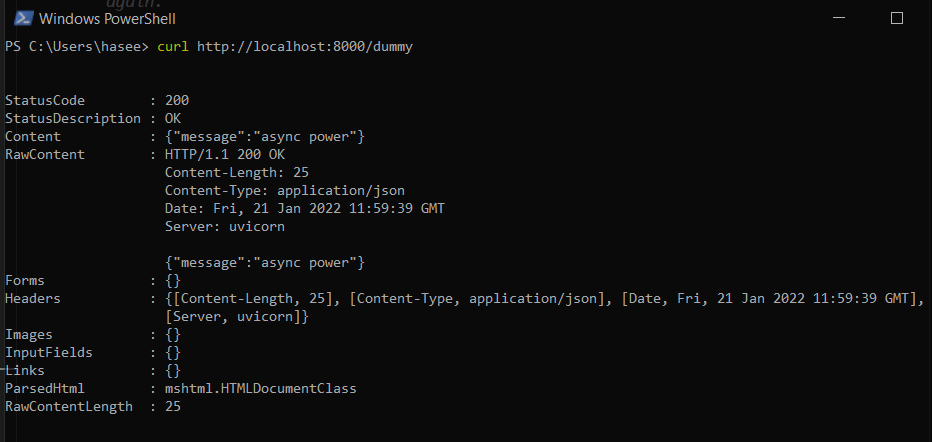Speed Up Your Python Code With 100% Thread Utilization Using This Simple Library.

Amazing single-threaded performance with FastAPI — optimize your code for a HUGE performance boost!
Python has many web frameworks the most popular being Django and Flask. I am most familiar with Flask myself and used it extensively to build hobby projects and improve my programming skills. However, as with all things in tech, new frameworks are constantly being developed. As a programmer it is important to be up to date with the latest and greatest of what is out there.
FastAPI is a web framework for Python and in many ways resembles the simplicity of Flask. What makes FastAPI different is that it runs on ASGI web servers (such as uvicorn) while Flask only runs on WSGI web servers. This difference can result in a huge performance gap.
ASGI is the emerging trend in Python so it is important that you learn about it.
Developing high-performance Python applications becomes super easy with FastAPI and ASGI. We will see how you can develop a simple API in FastAPI and then we will benchmark it against Flask to see exactly how much faster it is.
Let’s get onto it!
First, a quick introduction to WSGI vs. ASGI.
WSGI vs. ASGI
WSGI stands for Web Server Gateway Interface. Put simply, this piece of software sits between a webserver (like nginx) and your Python web framework (like Flask). It specifies how the web server should forward requests to the web framework. WSGI was first released in 2003 so you can imagine how old it is. WSGI is inherently synchronous. This can result in slow execution.
ASGI stands for Asynchronous Server Gateway Interface. ASGI is the emerging trend that will replace WSGI. The crucial difference is that ASGI supports web frameworks with asynchronous code. That is, it is inherently asynchronous. This can speed up execution if your code is asynchronous (i.e. if it uses async await)
Confused? No worries. Here’s a short illustration to highlight the difference between synchronous and asynchronous code and WSGI vs. ASGI.

As you can see, in synchronous execution (WSGI) a single thread can only handle one request at a time. So, if the current request has some blocking code where it needs to wait for some results a lot of time is wasted (as can be seen in the waiting block in the diagram above). Only once the entire of task A is finished, can the thread move to task B.
On the other hand, in asynchronous execution (ASGI) a single thread can handle multiple requests. While the execution is waiting on task A the thread can jump on task B and finish it in the time it takes for task A to return. The thread then jumps back to task A and completes it. From the diagram above, we see that we save a lot of time in this way with asynchronous execution. More importantly, with asynchronous execution we are utilizing 100% of the thread which means less waiting and more doing. This results in a huge performance boost for certain applications.
In short: With asynchronous code, threads can do more work in the same amount of time.
This results in more work done per unit time. This is where the performance boost comes from.
Benchmarking
Theory is nice and all but it’s much more fun to see a real example illustrating the performance difference.
Begin by installing the following libraries for FastAPI:
pip3 install fastapi[all]We use the following code for FastAPI:
We have two endpoints: the root / and a secondary endpoint /dummy. The root endpoint does some heavy work which we simulate by setting a timer to 20 seconds. We define the endpoints themselves to be async and use the await keyword to signal that the thread can go and do other work while this call finishes returning. We also use the sleep function from asyncio since it supports async and await. The dummy endpoint simply returns a message.
As you can see defining an API in FastAPI is pretty simple. We just need to initialize a FastAPI app and define the endpoints with the @app notation.
The following code is used for Flask:
The code is identical to the FastAPI one.
The idea is that, we call the root endpoint and while it is waiting for 20 seconds we make a call to the dummy endpoint.
Here’s the key point: If the interface is asynchronous (ASGI) the call to dummy should return immediately.
We are setting the threaded flag to false in Flask because we only want to test single-threaded performance for learning purposes. The key takeaway should still be the same for multi-threaded applications.
Start the FastAPI server with:
uvicorn tfastapi:app --reloadYou can check in the console what port it is running on. Default is port 8000.
Next, open up two terminal windows. (I use PowerShell on Windows, you can also use Git Bash or a Linux or MacOS terminal)
In the first one paste the curl command:
curl http://localhost:8000In the second one, paste the following curl command to hit the dummy endpoint:
curl http://localhost:8000/dummyPress Enter on the first window and then on the second window.
You should notice that the request to dummy returns almost immediately:

If you wait 20 seconds, the call to root should return.
What is happening here? The thread first handles the call to the root /. While it is waiting on the sleep function, a call is made to the dummy/ endpoint. The thread then jumps to handle the request to dummy/. Once it is handled, the thread returns to handle the root request.
Now let’s see what happens in case of Flask.
You can run the Flask server with:
py tflask.pyIt should run on port 5000.
Next, do as before and copy and paste the curl request to root and then the curl request to dummy.
Run the root request first and then the other one.
You will notice, the call to dummy/ does not return immediately! It takes 20 second for both requests to return. What is happening here?
Even though the code is asynchronous, Flask uses a WSGI implementation of the server-framework interface. This means the endpoints in Flask are not really asynchronous. We make a request to root and it waits. When we make a second request to dummy/ the thread does not jump to handle that request. It sits and waits for the request to root to be handled. In other words, the code sits and waits for the 20 seconds to be over before doing anything else. In this time period the thread is doing no work apart from waiting! So inefficient!
Conclusion
In this post we got a refresher on synchronous vs. asynchronous code. We also learnt about WSGI and ASGI interface implementations. We learnt how FastAPI can help achieve 100% thread utilization and dramatically speed up slow code.
All you need to do to utilize FastAPI is to use async in front of every endpoint and also make sure your code is asynchronous. Actually I would like to expand on this last point and make some general remarks:
- ASGI is still very new and so it might be harder to find documentation for it. It is also less tested when compared to WSGI.
- If you want to gain performance boosts, your code needs to be asynchronous. Not all libraries support this yet. Certain database libraries for Python for example only have synchronous implementations. In such cases you likely won’t get much of a performance boost.
- Lastly, FastAPI supports type hinting and integrates quite well with Pydantic.
You can check my post here for more on that.
Thank you for reading.
